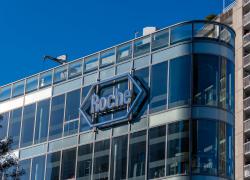
ASCO-GU – Corbus backs Chinese data with its own
But investors remain unimpressed with the Nectin-4 ADC Corbus bought for just $7.5m.
But investors remain unimpressed with the Nectin-4 ADC Corbus bought for just $7.5m.

Can clinical results generated in the west live up to the promise of an earlier trial carried out in China? Several US companies that have licensed Chinese assets have tried to answer this question, and the latest appears to be Corbus Pharmaceuticals, which has just unveiled the first western data for its anti-Nectin-4 ADC CRB-701.
At first sight, though the datasets differ, the results do appear to back the early Chinese data on the back of which Corbus licensed CRB-701 from China's CSPC Pharmaceutical in 2023. Because this deal marked a new focus for investors the western data had been keenly awaited, though the fact CRB-701 rights had cost Corbus just $7.5m up front should have mitigated some disappointment.
The limited outlay cut little ice with investors, however, who seemed unimpressed by the data and by the prospect of Corbus shelling out more cash to develop CRB-701. Corbus initially fell 20% in the premarket on Friday, before opening off 5%.
Differences and similarities
There are several immediate takeaways from the western results, presented for the first time on Friday at ASCO's Genitourinary Cancers symposium.
The overall response rate of 27% seems in line with CSPC's data, though while CSPC had tested seven doses Corbus used only the four highest of these. On the other hand, CSPC had mandated that patients' cancers express Nectin-4 – a requirement Corbus said it hadn't implemented in its trial.
On the safety side the types of treatment-related adverse events seemed to differ between the two studies, though ocular toxicity in particular will remain closely watched. Perhaps because of ocular toxicity neither company is now pursuing the highest, 4.5mg/kg CRB-701 dose, with expansion cohorts of both the Chinese and western trials zeroing in on 2.7-3.6mg/kg.
For these 2.7-3.6mg/kg doses Corbus claimed a reduction in any-grade ocular toxicity from 66% in the China study to 38% in its own, but the comparison is complicated by the fact Corbus implemented in its trial a proactive protocol specifically to mediate ocular adverse events.
Comparing the CRB-701 datasets
CSPC | Corbus | |
|---|---|---|
| China study | Western study | |
| Nectin-4 expression required? | Yes | No |
| Cutoff | Apr 2024 | Dec 2024 |
| Evaluable patients | 25 | 26 |
| Doses (mg/kg) | 0.2, 0.6, 1.2, 1.8, 2.7, 3.6 & 4.5 | 1.8, 2.7, 3.6 & 4.5 |
| ORR urothelial | 44% (4/9 PR) | 25% (1/4 PR, none in post Padcev) |
| ORR cervical | 43% (3/7 PR) | 50% (1/2 CR) |
| ORR head & neck | NA | 57% (4/7 PR) |
| ORR endometrial | NA | 50% (1/2 PR) |
| ORR at doses ≥2.7mg/kg | 40% (6/15) | 33% (5/15) |
| ORR at all doses | 28% (7/25) | 27% (7/26) |
Source: ASCO.
On efficacy perhaps the key finding is that CRB-701 appears not to be active in urothelial bladder cancer patients treated with Pfizer's Padcev, the first anti-Nectin-4 ADC approved for this use. Given Padcev's dominance the prospects for other Nectin-4 players in bladder cancer are likely limited to the post-Padcev setting, as the likes of Innate Pharma, and perhaps even Bicycle, are realising.
Still, maybe bladder cancer was a long shot for Corbus. A far more promising finding is that four of seven head and neck cancer patients in Corbus's trial responded to CRB-701, with another being graded stable disease despite reporting 65% tumour reduction by Recist. This, the company said, marked head and neck cancer as a new target for Nectin-4 blockade.
The group now plans dose optimisation in bladder, cervical and head and neck cancers. But it has two other pipeline projects among which to spread its $159m September cash balance, and with a market cap of just $110m raising more money won't be easy.
1293













